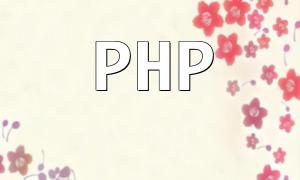Real-time chat systems have become a common application in web development, with PHP-based real-time chat systems being particularly popular among developers. This article will provide a detailed overview of the common issues faced during the development of PHP-based real-time chat systems, along with their respective solutions.
Connection issues are one of the most common and critical challenges in PHP real-time chat system development. These issues include establishing connections, maintaining connections, and disconnecting.
To resolve connection issues, developers often use technologies like WebSocket or Socket.IO. WebSocket is particularly well-suited for cross-platform and cross-browser application development, supporting HTML5 and JavaScript. Below is an example of code for establishing a connection using WebSocket:
$server = new swoole_websocket_server("0.0.0.0", 9502);
<p>$server->on('open', function(swoole_websocket_server $server, $request) {<br>
echo "server: handshake success with fd{$request->fd}\n";<br>
});</p>
<p>$server->on('message', function(swoole_websocket_server $server, $frame) {<br>
echo "received message: {$frame->data}\n";<br>
$server->push($frame->fd, json_encode(["hello", "world"]));<br>
});</p>
<p>$server->on('close', function($ser, $fd) {<br>
echo "client {$fd} closed\n";<br>
});</p>
<p>$server->start();<br>
In the code above, the $server object listens for WebSocket connections, including events such as connection establishment, message transmission, and connection closure.
Message delivery issues are another common problem in PHP real-time chat system development, involving aspects such as sending, receiving, and processing messages. Special attention should be paid to issues like message format, size, type, and encoding.
When sending messages, the server->push() function is typically used to send data to the client. For example:
$server->on('message', function(swoole_websocket_server $server, $frame) {
echo "received message: {$frame->data}\n";
$server->push($frame->fd, json_encode(["hello", "world"]));
});
In the code above, the server->push() function is used to push the message "hello world" to the client.
Data storage issues are also a challenge when developing PHP-based real-time chat systems, mainly involving data storage, querying, updating, and deleting.
To address this challenge, developers can choose from storage technologies such as Redis, MySQL, or MongoDB. Among these, Redis is particularly suitable for storing user data in real-time chat systems due to its high read-write performance. Below is an example of code to store an online user list using Redis:
$redis = new Redis();
$redis->connect('127.0.0.1', 6379);
$redis->set('online', json_encode(['user1', 'user2', 'user3']));
In this code, the $redis object is used to connect to the Redis database and the set() function is used to store the online user list in Redis.
To resolve connection issues, developers should pay attention to the following points:
These measures can effectively reduce the occurrence of connection issues.
To resolve message delivery issues, developers should focus on the following aspects:
By implementing these measures, message delivery issues can be effectively avoided.
To address data storage issues, developers can consider the following suggestions:
These methods can effectively eliminate data storage bottlenecks and improve system performance.
When developing PHP-based real-time chat systems, common issues related to connections, message delivery, and data storage require careful attention from developers. By selecting the right technology framework, optimizing system design, and handling technical details flexibly, developers can achieve an efficient and stable chat system.









